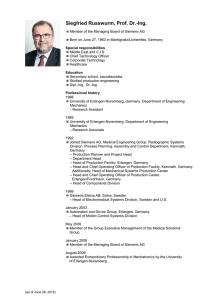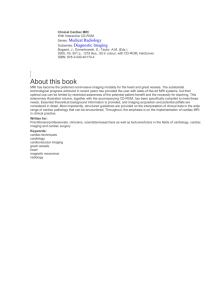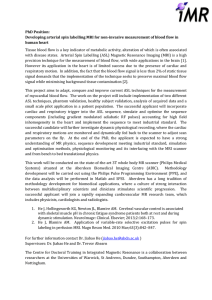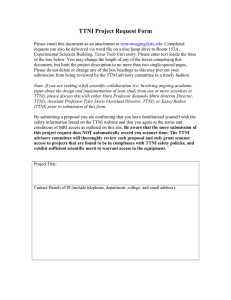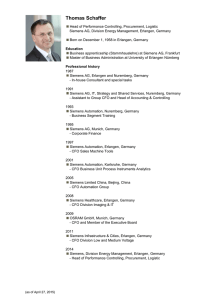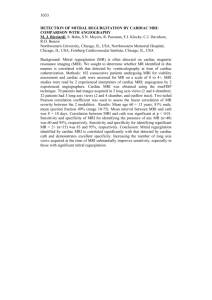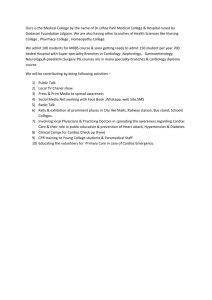ONLINE APPENDIX Cardiac Magnetic Resonance Imaging Cardiac
advertisement
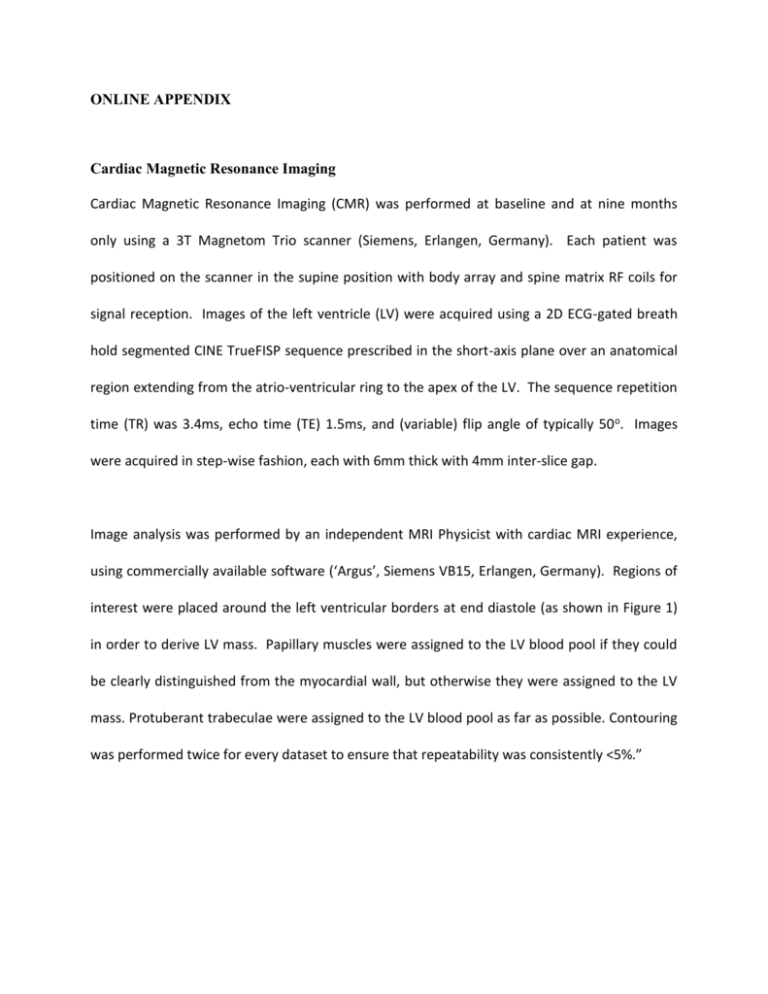
ONLINE APPENDIX Cardiac Magnetic Resonance Imaging Cardiac Magnetic Resonance Imaging (CMR) was performed at baseline and at nine months only using a 3T Magnetom Trio scanner (Siemens, Erlangen, Germany). Each patient was positioned on the scanner in the supine position with body array and spine matrix RF coils for signal reception. Images of the left ventricle (LV) were acquired using a 2D ECG-gated breath hold segmented CINE TrueFISP sequence prescribed in the short-axis plane over an anatomical region extending from the atrio-ventricular ring to the apex of the LV. The sequence repetition time (TR) was 3.4ms, echo time (TE) 1.5ms, and (variable) flip angle of typically 50 o. Images were acquired in step-wise fashion, each with 6mm thick with 4mm inter-slice gap. Image analysis was performed by an independent MRI Physicist with cardiac MRI experience, using commercially available software (‘Argus’, Siemens VB15, Erlangen, Germany). Regions of interest were placed around the left ventricular borders at end diastole (as shown in Figure 1) in order to derive LV mass. Papillary muscles were assigned to the LV blood pool if they could be clearly distinguished from the myocardial wall, but otherwise they were assigned to the LV mass. Protuberant trabeculae were assigned to the LV blood pool as far as possible. Contouring was performed twice for every dataset to ensure that repeatability was consistently <5%.”
